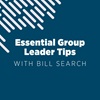As I travel around the country and talk with people about community, one issue becomes clearly universal—people want spontaneous community over forced belonging. In their search to experience community, they have all tried the latest and greatest new model or practice that promises authentic community. They have been motivated, pushed and "guilted" into these new forms only to leave empty and alone.
On the other side of the table sit pastors and key leaders who are frustrated and defeated from all the energy expended trying to keep the machine up and running with some appearance of success. "It's not working," a desperate voice cried from the group. "I have one of the leading, most respected and mimicked small group programs in the country and I'm here to confess…it doesn't work."
I wasn't surprised and neither was anyone else in the room. We were all glad he had the heroic strength to express it so honestly. The room experienced the feeling all confession brings. You are glad the weight is off your shoulders, but what is before you is out of control and not yet known. It is peace and fright at the same time.
We try so hard to replicate the experience of connecting with someone (or a group of people) in a way that helps our life be more complete. We have all experienced this wonderful sense of connection, both in long time friendships and in a first time meeting. So we bullishly run down a road searching for any answer. The question is; how do we create this experience of belonging? How can we help people grow in a way that helps them connect and have community? Why are the groups we create so empty and seem so forced?
Community: a Strong Search to Belong
When I sit and listen to people as they tell stories of success and failure, a few key questions and insights emerge. First, the search for community is so strong that some will stretch their comfort zone to participate in a group that lacks spontaneity. People long to belong. We are in constant search for connection. We experience health when we connect. In our efforts to help people with their search, we have developed models of forced belonging. Some surmise that with the lack of time, family connection, and knowledge, what we need to do is to get people into a group. We think if we create a group that has a common set of values, meets regularly, and focuses on a covenant connection, people will be helped by experiencing belonging. Sometimes this works. Sometimes it almost works. Many times, it does not work and in extremes it wounds and scars people.
We can no longer take advantage of people's desperate search to connect. We can not allow ourselves to promote "authenticity" and "real" community as only those connections we create "for them." We can no longer pretend that forced community works better than or as well as what really works. But, how do we help? Do we just stop creating groups?
Spontaneous Community and Herding Cats
A few more questions and insights surface when leaders discuss successes. Their stories always point to the root of the success as spontaneous. It may be that when people are forced together that there are just enough healthy people that find some connection with a person or group that community actually materializes. It may not have anything to do with the forced grouping.
"I have a time when all newcomers gather at my house to find out more about the congregation and to connect with other newcomers. At the end of the evening, I used to ask the group to find a small group from a list of existing groups I had provided to them. Very few ever found their own way to a group. It was only through a "healthy" amount of prodding that some would try this daunting request. Finally, one night someone had the courage to ask, "Why can't we just gather as a new group?" Several controlling thoughts rushed my head. Who would lead? How can a bunch of newcomers know what to do? I nervously allowed them to meet. It is now the only way I will approach the idea. Sometimes people find a connection that night, other times they do not and I have learned to be at peace about it. I no longer try to control their lives. A new group begins when people connect naturally."
There it is. Authentic community happens spontaneously. This is what people are looking for in their lives. They want to connect to those who spontaneously connect with them. Anything else feels contrived and out of place. So, can we plan on spontaneity? Nothing really happens without some kind of leadership involvement, does it?—So, how do you (or can you) lead "planned spontaneity?" Is there such an animal? Isn't it somewhat like herding cats?
What Have I Done?: Breaking the Cycle
I rarely (if ever) hear of a vicious leader who has tried to manipulate people with small groups for the sake of power. Most leaders are trying to help people with their lives. In our zeal to help we are sometimes persuaded to pay more attention to fad than what would really help. Fads start with those who are equally zealous to help and who pay more attention to results than health. It is a cycle that feeds our drive to succeed and our readiness to believe in the appearance of something working rather than finding what is working in the whole of life on this planet. It is time to break the cycle.
"I finally blew the whistle. I rushed into staff meeting announcing that the small group ministry was coming to a halt. I can no longer try to massage something to life. It's over. We are not helping people feel like they belong. Only a small percentage of the groups we start actually help. All the other groups suck the energy right out of the leaders that we have trained. We have a high level of leader burnout because of this. Until we find out what really helps people grow and experience community, it is over."
"It's a farce. I have read all the books. I have attended all the suggested conferences. I have followed the models to the nth degree and yet, nothing really works well. The killer is, I am worn to the bone. I believe that they should work. I know people need help and seek a real hope to belong. I even believe they have some biblical truth behind them. So why don't they work?"
We are so afraid of failure that we will build supports around a falling tower to give the appearance that it is standing on its own. It is hard for us to break the cycle. Admitting failure is not an option. I hear the jargon of the cycle all the time. People speak the buzz words without an awareness of their definition. They try to answer significant questions for people's lives with quaint pleasantries. So how can we keep our dignity and let go at the same time? How can we break the cycle without breaking ourselves? If we break this cycle will it just lead us to another fruitless cycle?
The Possibilities
When listening to the stories people share about how they connect in significant ways three simple struggles become apparent.
- People want help with their lives
- People have a deep longing to belong
- People seek to connect in spontaneous and healthy ways
People are not looking for forced, controlling connection. And, when we are honest with ourselves this is what we hope to help with. So, how do we help?
I am not seeking to provide answers. I am on this journey with you. I would like to provide some possibilities that may help. I have said and written things in the past that I now do not agree with. However, in saying them it has allowed the conversation to continue and provide help and health along the way. We are growing forward.
There are two helpful studies. I believe there are some insights in a holistic study of community. Community, when studied with the help of sociology, anthropology, architecture, communication, and city engineering provides keen insights for how people connect. This study revolves around the studies of Edward T. Hall in proxemics.
The second study helps with our conversation on spontaneity. Taking a good look at how many natural occurrences spontaneously emerge helps as we seek to connect people into a community. We can gain significant insight from biology, embryology, mathematics, and computer science. The fulcrum of this study is the theory of emergence.
In the 1960's, Edward T. Hall coined the term, proxemics. Proxemics is the study of how physical space develops culture and communication. Expanding on Hall's idea, I advocate the possibility that proxemics is not only about physical space but language has spatial meaning, and the words we use inform people how they belong (or don't belong). These spaces are the chemical compound that creates the environment for spontaneous, healthy community (more on this later).
Hall identified four spaces—public, social, personal, and intimate—and studied these as physical space. Real estate communicates meaning, purpose, and culture. Depending on proximity, the words, symbols, and gestures we use take on different meanings. But this Silent Language communicates more than definition.
I believe that space is not only physical (real estate); it is also formed and interpreted in our minds. For example, in Hall's model, when people stand zero to four inches from each other, they are sharing intimate space. But what happens to this definition when we enter a crowded elevator? We stand close to one another yet we are far from intimate. In fact, elevators are public. It is the mental evaluation and interpretation of the physical space that allows us to conclude that we are in public space. It is the mixture of physical space and mental exercise that interprets how we belonging and experience community.
These four spaces are where we communicate and develop a sense of belonging. They are where we connect, grow roots, and satisfy our search for community. And harmony among the spaces builds healthy community in individuals and organizations.
The Four Spaces
Public belonging occurs when people connect through an outside influence. Fans of a sports team experience a sense of community because they cheer for the same team. They wear official garb, buy special broadcast viewing privileges, and stay up too late or get up extra early just to see the results of the game. These relationships carry great significance in our lives.
Social belonging occurs when we share "snapshots" of what it would be like to be in personal space with us. The phrases "first impression" and "best foot forward" refer to this spatial belonging. You belong socially to your favorite bank teller, your pharmacist, or some of the people with whom you work.
Social belonging is important for two reasons. First, it provides the space for "neighbor" relationships. A neighbor is someone you know well enough to ask for (or provide) small favors. Second, they are important because they provide a safe "selection space or sorting space" for those with whom you would like to develop a "deeper" relationship. In social space we provide the information that helps others decide whether they connect with us. We get just enough information to decide to keep this person in this space or move them to another space.
Through personal belonging, we share private (not naked) experiences, feelings, and thoughts. We call the people we connect to in this space "close friends." These are those who know more about us than an acquaintance, yet not so much that they feel uncomfortable.
In intimate belonging, we share "naked" experiences, feelings, and thoughts. We have very few relationships that are intimate. These people know the "naked truth" about us and the two of us are not "ashamed."
These four spaces are key for helping people with their search for community. We do not experience belonging in just one or two of these spaces. All four contribute to our health and connectedness. Thus, to help people with their lives we could simply help in all four spaces. One way may be to start thinking in terms of becoming group environmentalist in stead of programmers. Create the environments/spaces that allow people to connect naturally in all kinds of groups. The secret is to see all connections as significant. It is not necessary for us to process people through the spaces to get them to the "important," "real," or "authentic" relationship. All of these spaces are important, real, and authentic in people's lives. Validate what people count as valid in their life. We will then begin to help people with their lives.
We could help with building the competencies to hold significant, healthy relationships in all four spaces. Each space requires a different set of competencies. In public space a high level of social conformity is key to connecting. While in social space it is helpful to know how to give a short, authentic snap-shot of who you are. Giving help with these competencies will promote healthy growth.
We could also help by allowing people to belong in the space that they choose rather than force them into a space that is foreign to what they need. It is worth saying again, people search for spontaneous community over forced belonging. Let people lead themselves. God does. We can learn. People will find their way to healthy connection.
Environmentalist
So, what is the environment and how do you create group "chemistry?"
To switch from programmer to group environmentalist begins with a mental shift. "Environmentalists" exercise restraint when it comes to controlling the results. They are primarily concerned with creating a "healthy" climate for spontaneity to occur. They create the environment and sit back to see what happens. The first shift is to give up control.
People seek help not control. It is not our job to tell people the things they must do. It is our job to help people to discover God in their lives. We best do this by providing the environment where they almost stumble over God's helping hand.
The second shift is to refocus our energy toward "chemistry." An "environmentalist" expends energy massaging the "chemical compounds" that produce the environment. I believe that if we would focus on building the competencies people need to grow healthy connection in each of the four spaces (the chemical compound) we would create the environment for spontaneous community. Then our research might be directed less on new "ice-breaker" games and more on what helps people connect in social space. We may give up reading how-to books on influencing people and discover new ways to connect people through outside influences (public space). We might redirect our push to help the children express themselves and teach them the appropriate spaces to share intimate thoughts and the cries of hurt and anger. A group environmentalist helps people grow themselves by providing fertile soil.
Helping Karen
On a recent trip to Portland, I sat with a couple of friends in one of the cities small, neighborhood diners. The food and service were good and the atmosphere was true to the clientele. Karen is the manager. She is a young woman in her mid to late twenties. She is full of hope and dreams. In making her rounds, she stopped by our table. She engaged us in more than the usual "how is your meal—can I get you anything—I hope you enjoy your evening and return to eat with us again." She pleasantly engaged in our lives (socially). She wondered who we were and why we were together. She wanted to know what our "interesting" conversation was about. We were happy to share these "snap-shots." And then she shared…
"I hope to be moving to Nashville. I don't much like Portland. It is not a very friendly city. I mean it's like this. People on the street say "Hi" and everything but, they really don't mean it. When I go to parties or hang out in clubs all I see are these little cliques everywhere. Therefore, I can't find anyone I can get really close to."
Karen is not alone in her search. This is the cry of many. But, how do we help?
To help Karen we might rush to the end of her statements; "Therefore, I can't find anyone I can get really close to." This is a very interesting statement. A few minutes before Karen shared with us how her best friend is going to join her in purchasing a restaurant in Nashville. She expressed how close she and her friend were. She described a number of short vignettes that supported that they were good friends. So, what is she searching for? A few more "close friends?"
Our answer to Karen may come with too much haste. Many would try to fix Karen's dilemma by connecting her to a group; maybe a group at church. We might introduce her to some singles and she would no longer feel alone. This might accidentally work. But, is there something else that Karen is pointing us to?
Let's look closely at what Karen has told us. First notice the spatial references she has made. "On the street" refers to public space. "Parties or hang out in clubs" refers to her search for social connection. And when she refers to an elusive "really close" friend, she is speaking of her personal space.
I believe Karen is having an environmental problem. The soil she is trying to grow relationships in does not possess the element to grow significant connection. She has a difficult time trying to establish significant connections in the four spaces and thus does not experience belonging. Look closer and see that she is not searching for a really close friend, she is longing to belong. She is hoping to find community in a holistic way for her life.
The Chemical Compound
Chemical compounds have specific mathematical equations. H2O is water only if there is two parts Hydrogen and one part Oxygen. The equation can not be altered and still be water. The compound for community has an equation also. It may look something like: Pu8S4P2I. That is for every one part significant intimate connections there is two parts personal, four parts social, and eight parts public.
When the equation is different the environment for community does not exist. Many have promoted the equation to be: a common set of values, a common vision of the future, frequent meetings, and a contractual covenant (formal or informal). These are not the elements for community. These are the elements of the "chemical" that emits when community emerges.
Help for Karen may exist in the "chemistry" of community. Helping Karen may be as simple as helping her find significant, healthy connections in all four spaces and helping her to find these connections in harmony with the "chemical equation."
Generally, females search for personal and intimate connections more than men. This starts in significant ways in Jr. High. Jr. High girls intensively seek intimacy from their peers. This leads to several unhealthy relationships. A Jr. High girl will share the most intimate thoughts with her "best" friend one day only to feel the wrath of that "best" friend as their newly encountered arch enemy the next day. When an arch enemy has intimate knowledge the war can lead to deep and lasting scars.
As girls mature into women they learn that relationships happen in four spaces not just one or two. Some learn this more than others. One problem Karen may have is an innate feeling that relationships must be personal or intimate to be significant. She tries diligently to move people to a space that they do not want to belong or need to belong. Helping Karen would involve growing the understanding of how to develop significance in all four spaces.
Group Chemistry
We have all experienced the energy that flows from being a part of a team that "gels." It is said about many successful sports teams that the main reason for the success is "chemistry." So, how do we develop groups that emit that kind of vigor and health?
Our first job as a group environmentalist is to promote a healthy concentration of different kinds of groups. It is not healthy to just promote small groups as the only way to find community and significance. It helps people when we assist them with all four spaces. Group environmentalists pay attention to the equation of the chemical compound for community and promote all four connections as significant.
Our second responsibility is to create environments not groups. In healthy environments, people find connection on their own and spontaneously form groups. This gives freedom and responsibility to individuals. It allows our controlling nature to be kept at bay. People will experience belonging and a sense that this helps them with their life. Creating group chemistry is all about creating environments for significant belonging in all four spaces.
Talk with any coach who has been given the assignment of creating a team and they will tell you "chemistry" is spontaneous. Talk with any healthy person and they will tell you about connections they have with people they don't know their name, conversations with acquaintances, the fun they have with close friends, and the deep compassion they have for a select few they are intimate with. They will also allude to all of them being spontaneous and not forced, "chemical" and not planned.









